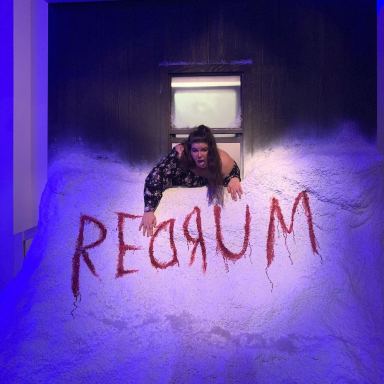Let the Right One In (2008): 21 Fascinating Facts and Trivia Items
It is considered by many to be one of the best vampire movies ever made.
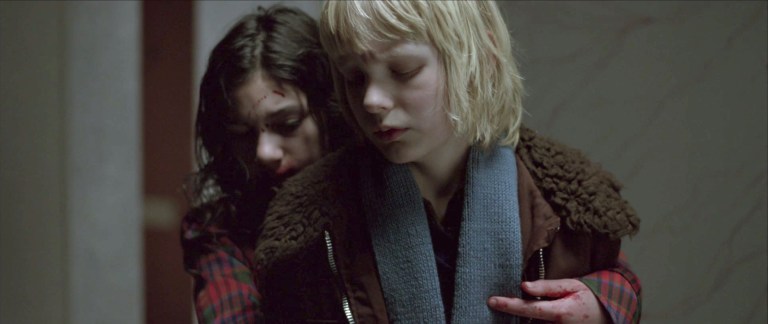
Let the Right One In (2008) is a Swedish vampire film based on the book of the same name by John Ajvide Lindqvist. It is considered by many to be one of the best vampire movies ever made. Let the Right One In premiered at the Gothenburg Film Festival and won the festival’s top award, the Nordic Prize. It was then released to critical acclaim and made $11.2 million against its budget of $4.5 million. As of early 2022, Let the Right One In had a 98% rating on Rotten Tomatoes.
The plot follows a 12-year-old boy named Oskar who lives in an apartment with his mother in Blackeberg, a suburb of Stockholm, in 1982. Oskar is severely bullied by his classmates, especially a boy named Jonny. Oskar becomes friends with a new girl named Eli who moves into the apartment next door. Eli lives with Håkan, a pedophile who protects the child out of selfish lust. The two children have lived lives of immense loneliness and quickly become close, learning Morse code to communicate by knocking on their shared bedroom wall. When Oskar learns Eli is both a boy and a vampire, he is upset but comes to accept him for who he is.

“Let the Right One In” is a “vampire movie,” but not even remotely what we mean by that term. It is deadly grim. It takes vampires as seriously as the versions of Nosferatu by Murnau and Herzog do, and that is very seriously indeed. It is also a painful portrayal of an urgent relationship between two 12-year-olds on the brink of adolescence. It is not intended for 12-year-olds.
Roger Ebert, I’ve Been 12 For A Very Long Time
While Let the Right One In is a story about childhood friendship and loneliness, it is also a gruesome vampire movie with some very creepy murder scenes. Håkan’s first kill in the woods and the final scene where Eli takes revenge on Oskar’s bullies in particular are two memorable and effective moments of horror in this film. For readers, the scene in the book where Håkan’s inhuman but undead body finds Eli in the apartment’s basement and attempts to violently rape him is so brutal and upsetting that it isn’t portrayed in either adaptation.
Making Let the Right One In:
- The title comes from a song by British singer/songwriter Morrissey called “Let the Right One Slip In” and is also a reference to the popular idea in vampire lore that vampires cannot enter a home without being invited. For instance, in the vampire miniseries Salem’s Lot, one of the most famous scenes involves a child vampire levitating outside of his friend’s window begging him to “Let me in”. Finally, the title also works as advice to our lonely protagonists about opening themselves up and being vulnerable once they have found someone worthy of “letting in.”
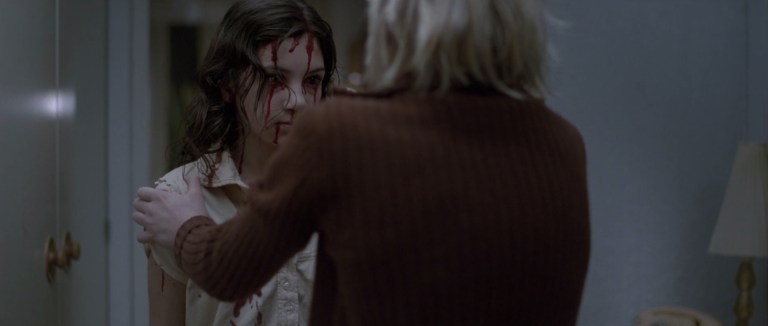
- Another reference to vampire lore shows up in Virginia and Locke’s subplot. After Virginia is attacked by Eli, she becomes a vampire, too. Learning that vampires cannot endure contact with daylight, Virginia dies by suicide when she asks the nurse by her hospital bed to open the curtains, which causes her to burst into flames.

- Director Tomas Alfredson says he “toned down” aspects of the book that were too horrifying to focus on the friendship between Oskar and Eli. However, many horror scenes were left in the film. The major elements missing from the adaptation were details of Oskar’s bullying (in the book, Oskar wears a chunk of mattress in his underwear he calls his “pissball” because he regularly experiences incontinence as a result of bullying) and a brutal scene where an undead Håkan attempts to rape Eli.
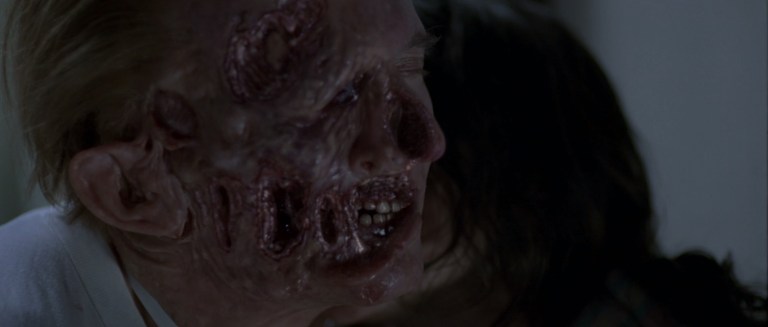
- It took over a year to cast the roles of Oskar and Eli and open auditions were held all over Sweden to find the perfect actors.
- All of Eli’s lines were dubbed by Elif Caylan because the actress’ voice was thought to be “too high-pitched” and they wanted the character to be more androgynous.
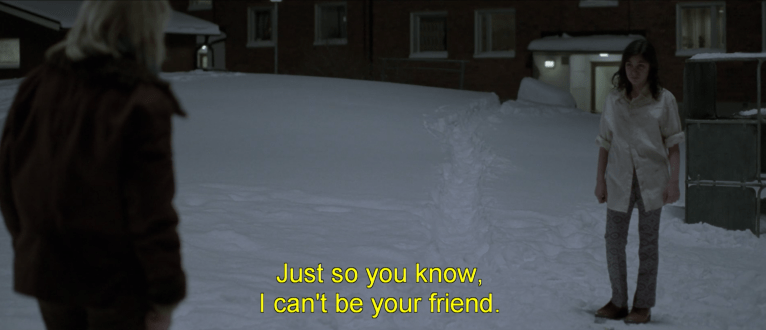
An austerely beautiful creation that reveals itself slowly, like the best works of art do. The simplicity of the story – a young boy, bullied in school, meets a young girl who just happens to be a 200-year-old vampire – allows Swedish director Tomas Alfredson to focus on these two pre-teen characters with a penetrating insight that not only makes it a great vampire film but a great coming-of-age film as well.
Bloody Disgusting, 00’s Retrospect: Bloody Disgusting’s Top 20 Films of the Decade
- Director Tomas Alfredson was given a copy of Let the Right One In, which is interesting as he “hates” being given books. Alfredson says this is because “it’s a private thing to choose what to read”; however, once he opened the book the story hooked him immediately. One of the reasons Alfredson loved the book so much is that he had his own experiences with bullying when he was growing up in the 80s.
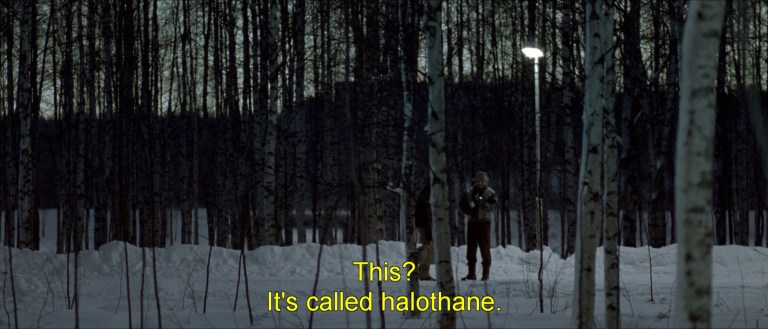
- John Lindqvist adapted his book to a screenplay on his own. When he was shown the first clips of the film, Lindqvist cried because he thought it was so beautiful. He has called the completed film “a masterpiece.”
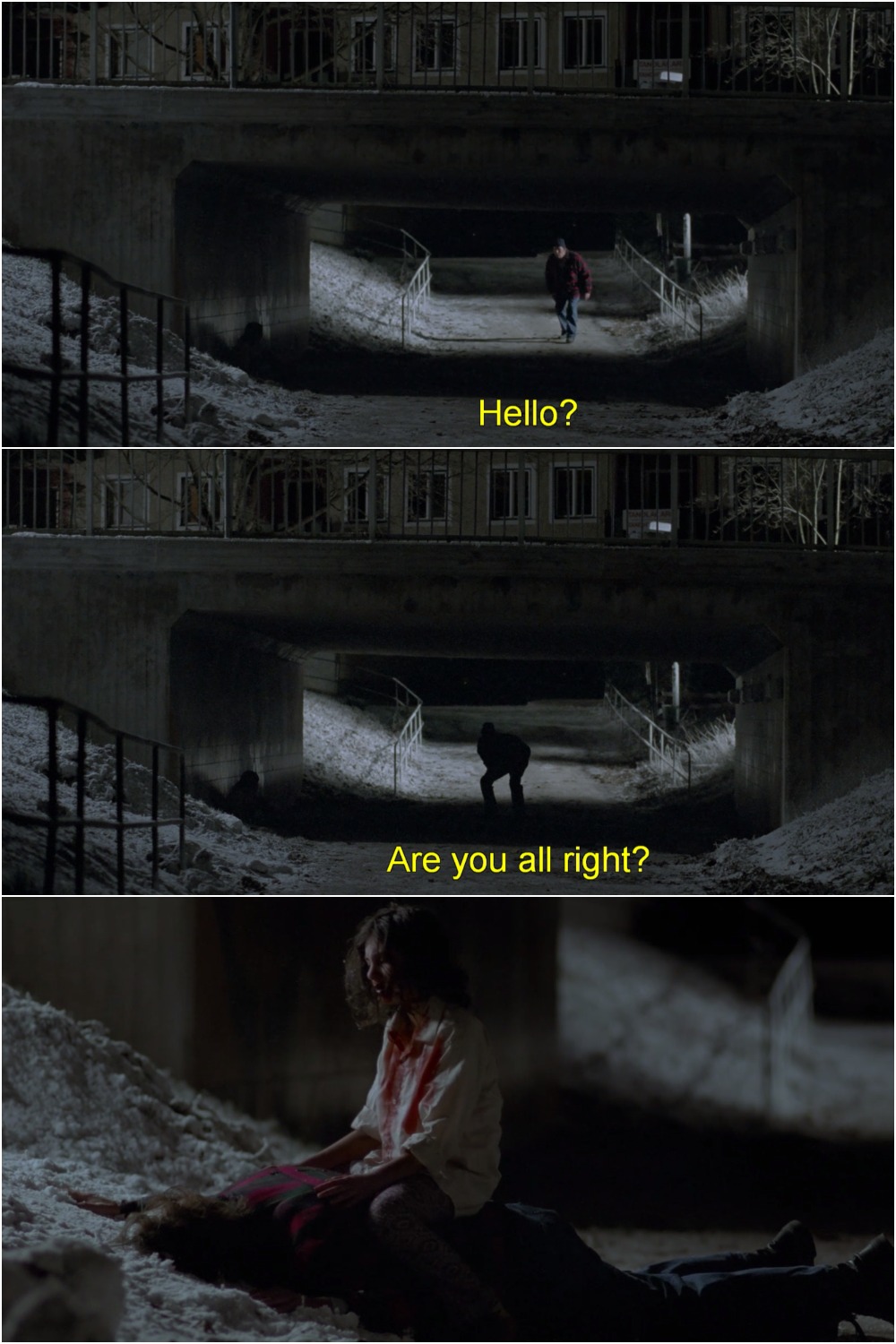
- Production recorded sounds such as voice actor Elif Ceylan eating fruit, sausages, and yogurt and paired them with typical animal noises to create the ghastly soundtrack of Eli feasting on her victims. The sound team won the Best Achievement award from the Swedish Film Institute for the “nightmarishly great sound in the film.”

- The word “vampire” appears in Let the Right One In only once. In this scene, Oskar winds up directly asking Eli, “Are you a vampire?” She responds, “I live off blood…yes.” This is unique to the film, as Lindqvist’s novel says “vampire” a lot.
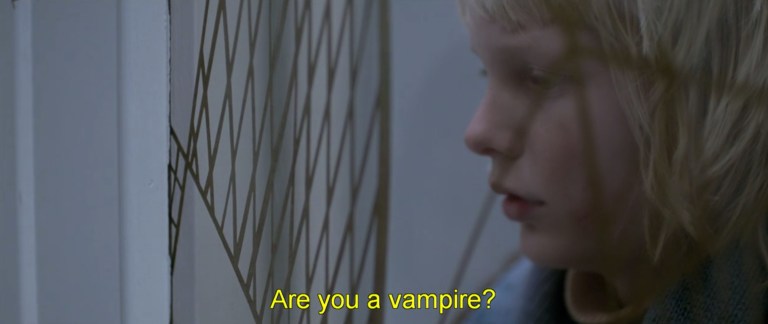
- One of the creepiest scenes in the movie is when Eli shows up at the hospital to drink Håkan’s blood. He is there because he poured acid on his face to not be recognized by police and endanger Eli. As Eli drinks, we get a closeup of what is left of Håkan.
- Eli’s androgyny comes from the fact that he was castrated around the time he was made into a vampire. While his scar is briefly visible in the film, the backstory of how Eli became a vampire is not shown. A mannequin was used for the scene where the scar is visible to keep anyone from sexualizing the child actress who played Eli.
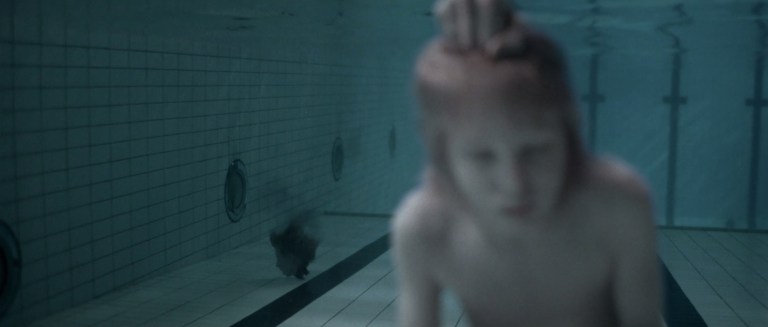
The Dark Ending
The ending of Let the Right One In is both happy and sad. The final scene shows Oskar and Eli on a train, heading away from their lives in Blackeberg. Oskar taps “kiss” in Morse code to Eli, who is hidden in his chest. Fresh from the vicious defeat of Oskar’s bullies this scene feels happy, but as the full scope of the future Oskar and Eli are heading to sinks in, the ending becomes kind of depressing. In a sense, Oskar has sentenced himself to the sad half-life we witnessed Håkan living. He will be Eli’s servant and put his own life at risk to kill for the vampire. On the other hand, two lonely people have found someone else who desperately wants to live life with them, which counts for something.

There is also a twisted irony in Oskar’s fate when we remember that at the beginning he called himself “The Murderer” in his fantasies about standing up to his bullies. Perhaps Oskar and Eli will only kill bullies from now on. Or maybe for them, the costs of murder and secrecy are worth bearing to end the expansive loneliness each of them has felt in their lives up to this point.
The American Remake
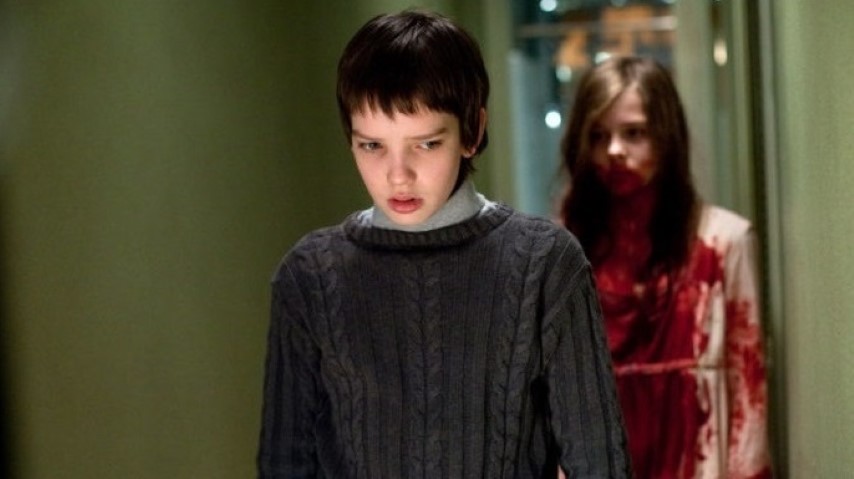
When Tomas Alfredson was approached about remaking Let the Right One In in English he declined, saying: “I am too old to make the same film twice and I have other stories that I want to tell.” The American remake moved forward with Cloverfield‘s Matt Reeves as the director. This version changed the characters’ names from Oskar and Eli to Owen and Abby. The setting was changed to Los Alamos, New Mexico in 1983. The title was also shortened to simply Let Me In because production felt the original title was “too long.”
I believe Let Me In is the best American horror movie of the past 25 years. And it’s the most seriously sinister vampire movie since Katherine Bigelow’s Near Dark in 1987.
Stephen King, Stephen King: Let Me In “the best American horror film in the last 20 years.”
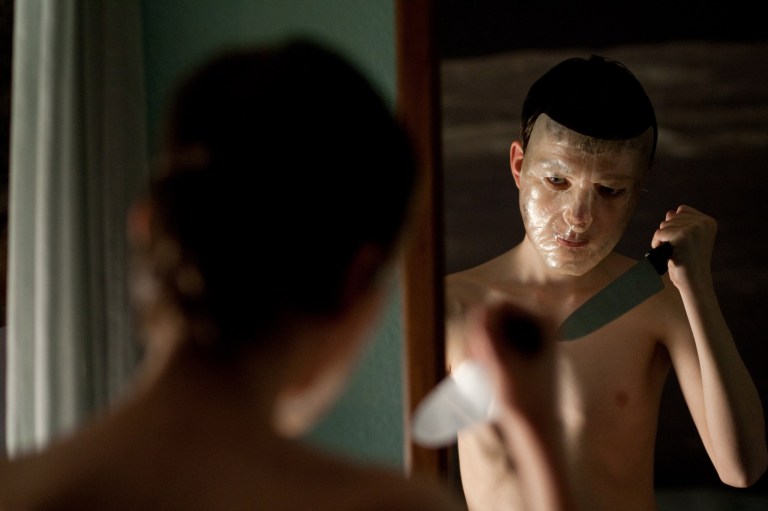
Let Me In (2010) was modestly successful critically and commercially, earning $24.1 million on its budget of $20 million. Critics praised the film for being a good remake of the original, though most people agree Let the Right One In is the superior film. Iconic horror author Stephen King was one of Let Me In‘s champions, urging horror fans to see the film in theaters.
John Lindqvist has praised both adaptations of his beloved novel:
I might just be the luckiest writer alive. To have not only one, but two excellent versions of my debut novel done for the screen feels unreal. Let The Right One In is a great Swedish movie. Let Me In is a great American movie. There are notable similarities, and the spirit of Tomas Alfredson is present. But Let Me In puts the emotional pressure in different places and stands firmly on its own legs. Like the Swedish movie it made me cry, but not at the same points. Let Me In is a dark and violent love story, a beautiful piece of cinema and a respectful rendering of my novel for which I am grateful. Again.
John Lindqvist, Stephen King: Let Me In “the best American horror film in the last 20 years.”
The Sequel
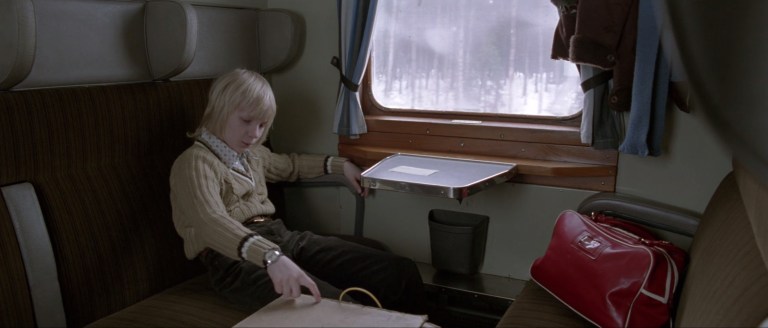
John Lindqvist wrote a short story titled “Let the Old Dreams Die” that was included in his short story collection of the same name. The story is a direct sequel to Let the Right One In and shows what happens to Oskar and Eli after they leave Blackeberg. An American TV series was ordered in 2017, but a pilot was never made. Showtime is currently producing an unrelated 10-episode season of a Let the Right One In series.
